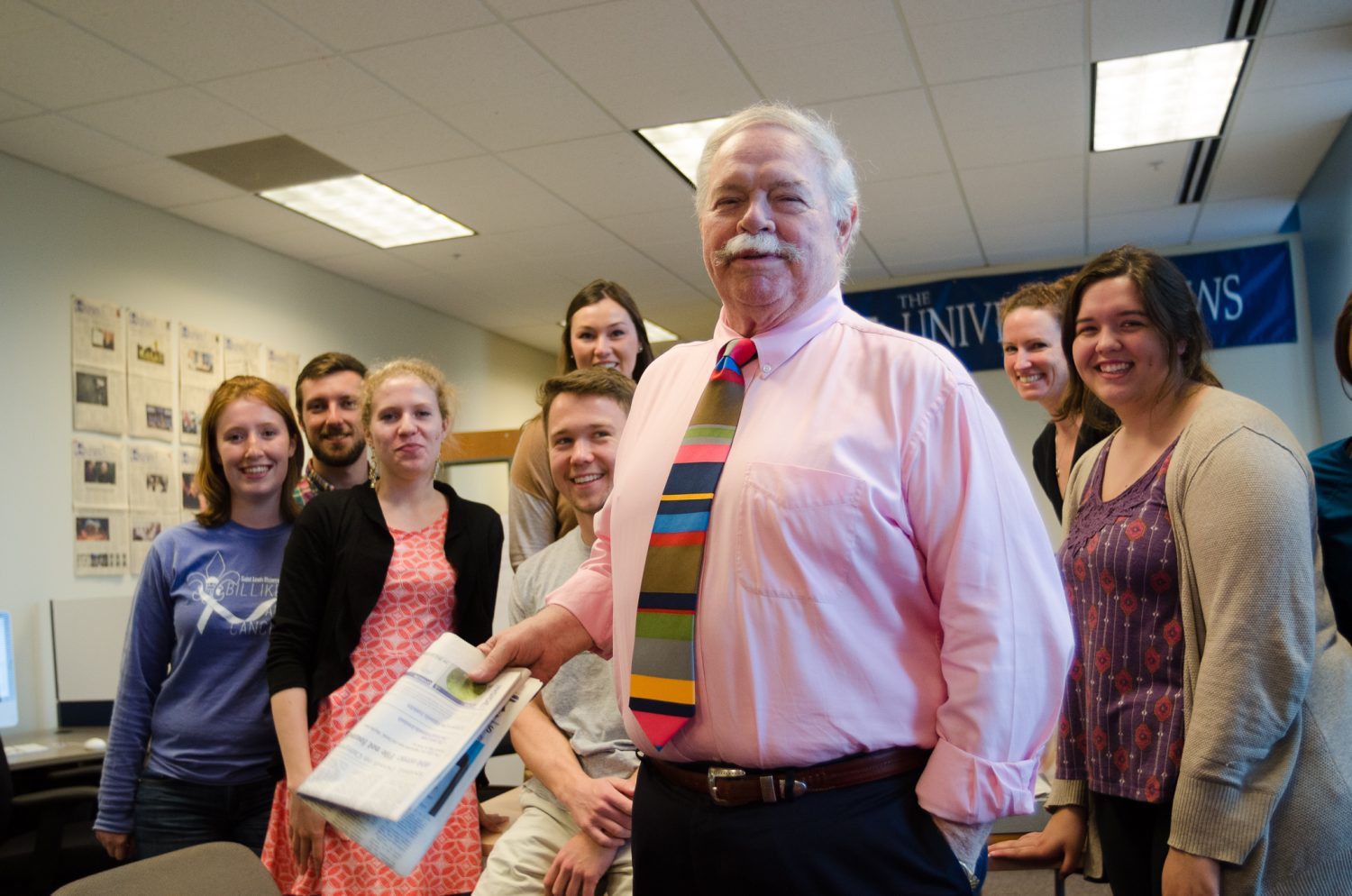Kids and college. Both can be wonderful, and both are most certainly expensive. The issue of child care is important to many members of the Saint Louis University community.
Parents who work, go to school, and take care of young children dart between classrooms and cafeterias, offices and libraries, and to-and-from the day-care facilities that dot the St. Louis area. The history of petitions for child-care facilities at SLU dates back to the “70s, but has never resulted in any type of on-campus care.
Currently, who cares?
‘Students have never requested, to my knowledge, that type of a service,’ said Kathy Humphrey, vice president of Student Development. ‘I would think if students really were interested and brought that forward, I”d be open to looking into it.’
In the fall of 1999, Student Government Association senator Dane Salazar brought the issue of child care to light with a survey. Its results, which could not be located in the SGA archives, did not provide any sort of child care for students on campus, but the need is still in question. A recent SGA survey included a question about day care, but the majority of the surveys were given to undergraduate students who expressed little interest in child care, or opposed it.
Employees at SLU have a few child care-oriented services available through the Benefits Office. The Child Day Care Association seeks out day care facilities that suit families” specific needs. The CDCA”s services are offered to SLU employees for free. The University also offers adoption assistance.
Historically, someone cares
There is a long history of quests to build a child-care facility on campus. The Women”s Commission was founded in 1973, and one of its original committees was on child care.
Mary Bruemmer, former dean of students and current coordinator for the Women”s Commission was one of the organization”s original members. Bruemmer said that the University, over the years, decided that because of the laws and regulations regarding child care that it would be too expensive to establish a center on campus. She said that the Women”s Commission accepted the decision that the University couldn”t compete with private day care.
‘There has always been a need, but not a demand,’ Bruemmer said. She explained that the service students would need most would be a drop-in babysitting facility, which would be difficult to provide because it couldn”t guarantee consistent income.
There have been efforts to bring a day-care that would be more like pre-school onto SLU”s campus, because of the needs expressed by faculty and staff. In 1977 and 1978 an extensive feasibility study was conducted by Carol Kohler, Ph.D. in the department of education. This study was still referred to in documents from the late “80s as the most thorough analysis of a site.
Xavier Hall was noted as a potential site, and every expense was listed, from snacks to taxes to cubbyholes. Kohler”s study indicated high interest in a child-care facility, which at the time would have cost about $170,000 for 50 students.
Years of further study ensued, but no final plans ever emerged. In 1988, another study was done. One document cited the ‘influx of women in the workplace, mainly because of economic necessity’ as a reason for the need for child care on campus. This study said that there was still a ‘crucial need’ for such care, and that the then-population of 5,000 University employees could ensure an enrollment of 300 children.
A nearby facility at the time, the Honeytree Learning Center, was investigated as a potential partner for a day-care center.
Once again, however, the plans fizzled. Bruemmer said that the sale of the Saint Louis University hospital to Tenet shifted the needs of a large number of employees out of the University”s hands, which diminished the perceived need for child care.
Other local universities have received accolades for their child care centers, including the St. Louis Community College at Florissant Valley.
The Childgarden connection
Although it was previously located on SLU”s campus, the Childgarden Child Care Center now holds no strong ties with the University. Lisa Eberle, a director at the Childgarden, said that seven percent of the students enrolled at the school have at least one parent somehow attached to SLU.
Eberle said that the Benefits Office at SLU occasionally contacts her for brochures. The Childgarden offers developmental programs for children ages 6 weeks to 5 years, as well as an after-school program for children up to the age of 8. She said that the school is currently at capacity, which is 125 students.
The cost of care at the Childgarden ranges from $151 a week for ages 2 to 5 and $202 a week for infants and toddlers.
The Division of Family Services subsidizes child care based on the parents” income. Thirty-eight percent of the families receive this aid.
The Childgarden opened in 1989. Eberle said that the Childgarden had more students from SLU before it moved into its new location on Laclede in February of 2001.
‘We”ve always had a good relationship with SLU.’
Another look
Georgetown University has two child-care centers–one for its law school and one in its main campus that is called Hoya Kids. Mary Cooper, the operations manager for Hoya Kids, said that the center is for faculty, staff and students of the University only. It opened in 1997 and is now filled to capacity with 58 children. The center runs a full day for children ages 18 months to 5 years.
There are work-study students who assist the professional child care providers, but the facility runs like any other nationally accredited center. The facility”s philosophy is developmental-based, not religious, although Georgetown is a Jesuit university.
Families at school
The School for Professional Studies is a section of the student population that might seem most in need of child care. The students in the school are at least 22 years old and most work during the day and many have families. ‘It”s been my experience that the question of child care hasn”t come up that often,’ said Jamie Comstock, Ph.D. interim dean and associate professor of organizational studies in the School for Professional Studies
‘It surprises me because it seems to be a big concern,’ Comstock said. She explained, however, that most of the students come straight from work, and that students have explained that they wouldn”t have time to pick up their child from day care and bring them to another facility.
The students in the school have their own peer advisory board and do not have a representative in the Student Government Association, ‘But we wouldn”t mind having one,’ Comstock added.





